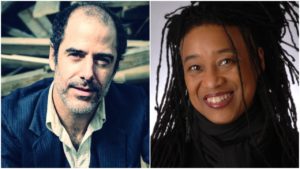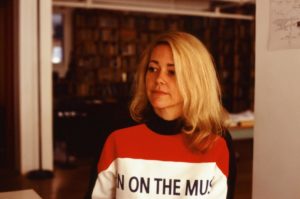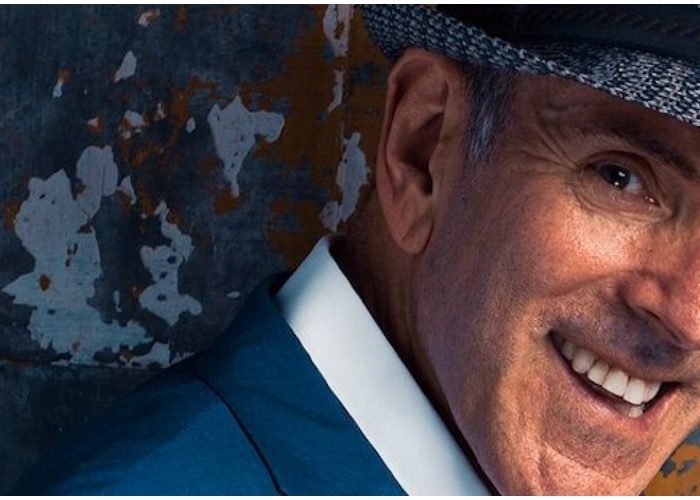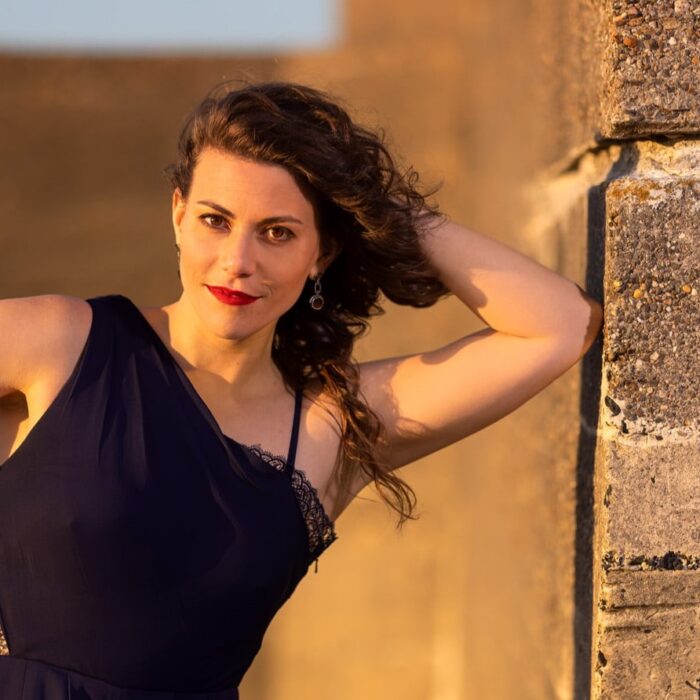
Q & A : Pamela Z & Geoff Sobelle on the Experience of Creating ‘Times3 (Times x Times x Times)’
By Jennifer Pyron(Credit: Shawn Harris, San Francisco, CA)
Composer Pamela Z and theatre artist Geoff Sobelle’s “Times3 (Times x Times x Times)” is PROTOTYPE’s fourth iteration of “Out of Bounds,” a platform for new vocal performance pieces taking place in unlikely locations throughout New York.
This multidimensional sonic experience is a site-specific journey through Times Square that calls to mind the importance of listening awareness.
OperaWire recently spoke with Pamela Z and Geoff Sobelle to gather more information around their creative process, collaboration, and what “Times3 (Times x Times x Times), pronounced “Times Cubed,” is all about.
OperaWire: What is Times3 (Times x Times x Times)?
Geoff Sobelle: This is a music piece, an art piece that is meant to rebound in one’s mind and ears in the form of a personal experience. One of the architects that we spoke to, Craig Dykers, asks questions about the design of Times Square during his interview and this makes me think about the three different time signatures that are present within the architecture of the place. The idea that the buildings in Times Square are old and the past is there while you are there in the present moment left to wonder about how the architecture is built to stave off the inevitable erosion of the buildings themselves. All three-time signatures are there and Pamela found a way to show this triple reality.
Pamela Z: I fantasized about this piece being a layered and simultaneous form of multiple levels of thought while being in the listener’s ears all at the same time. I imagined drawing the listener to certain areas of the sonic experience based on where they paid attention. Whether it be in the past, present or future, I tried very hard to do this literally but found it best to allow this to figuratively happen in an unexpected way from what we had initially thought about.
OW: How did you open up more to the history of Times Square through this piece? What did you learn while creating this piece together?
PZ: I feel like my knowledge and understanding of Times Square has really deepened with this piece. A lot of times when I make this kind of work I generate the material myself. I am best known for my solo performance work with voice, electronics and interdisciplinary media. I also have made a lot of fixed media, installations and chamber works where I have composed music for chamber ensembles but almost always when I make those kinds of works there is an element involved that includes interviewing a bunch of people and using fragments of speech from those interviews to compose the work.
For “Times3,” Geoff conducted the interviews over Zoom with people he selected. I got to work with his questions and recorded responses and learned about the history of Times Square and its possible future through multiple layers in this way. This provided me with material that was very meaty whereas before we decided to do this I didn’t know where I would get my information from to generate this work.
GS: I thought at least for the beginning, let’s go way back. I asked a friend of mine, Melanie Milton, who is a producer for Prototype and for this project if there was a naturalist we could talk to that would help us better understand what Times Square looked like four hundred years ago. Melanie found Eric Sanderson, who wrote ‘Mannahatta,’ and could talk more about what Manhattan looked like before colonial development.
It was this conversation that lead us towards taking greater strides in our approach for this project instead of taking it decade by decade when covering its history. I also remembered reading a book by Alan Weisman titled ‘The World Without Us.’ Others that I interviewed included stage managers, choreographers, my own sister who is an architect and very knowledgeable about poetry, and Adrienne Brown who wrote ‘The Black Skyscraper: Architecture and the Perception of Race.’ There was approximately 12 hours worth of material we had after the interviews were completed.
PZ: There were so many treasures in those interviews and we had ideas about including everything into certain areas within the piece however, fitting everything in there would make it too dense and there would be no musicality, time, or negative space. I had to find kernels that would spark emotion and feeling which ended up coming from some interesting places.
GS: Pamela is able to unlock a poem and the poetry of everyday speech. She then stays on a certain section of the poem with the audience in mind resulting in both a subconscious and conscious experience. Pamela is able to give the listener their own space to resonate with their own experience.
PZ: I was attempting to create music out of Stefanie Sobelle’s voice as she was reading Frank O’Hara’s ‘Lunch Poems’ that included lists such as pink feathers, mushrooms, tickets and terror, while at the same time layering with it the absurdity of the listed words placed together. This section mimicked what I did at the beginning of the piece when I invited the listener to listen from their fire escape, or bathroom toilet or trunk of their own car.
OW: After having just finished “Simultaneous,” a project commissioned by Deutschland Radio, how did you create “Times3” without it sounding like “Simultaneous?”
PZ: I was able to begin ‘Times3’ with a fresh start immediately after having completed ‘Simultaneous’ because of all the new material I had to work with from Geoff’s interviews. However, every time I do a piece like this there is at some level ways in which I repeat myself. I think that all artists do this. That we steal from ourselves and we repurpose ideas or ways that we have done things before. For example, one of my favorite pieces of an interview are the placeholders in between noises that we make when we are talking, like ‘uh,’ ‘um,’ ‘mm.’ Everybody makes those sounds, some more than others and I love building music out of them because they are musical. Every sound that we speak has pitch because pitch is just frequency but usually we don’t register this as pitch because it is used so randomly.
OW: What are some of your most memorable take-aways from this project?
GS: The research into this project left me with a desire of wanting to read more and learn more about the indigenous history and language of the Lenape people. I specifically want to know more about the language of time that the Lenape people practiced and how the meeting of cultures resulted in violence that changed the course of history.
PZ: I also think there is always this level in art and art-making that can’t be described as quantifiable facts or understandings that you’ve reached that come alive when you’re making a piece or listening to a new piece where I feel like I’ve found something sonically or I learn more about my nature of working and how I’m dealing with sound and ways that sound can be dealt with. Every time I make something I feel like this happens a little bit more.
PZ: I also want to mention something special that came to life in this project. For years I have listened to the sound of the undercarriage of the subway trains and there is a sound they make that is a motif from the song titled ‘Somewhere, There’s a Place for Us,’ found in Leonard Bernstein’s ‘West Side Story.’ In Times3 I decided to transcribe an entire passage based on the train pitches because it reminds me of how no matter what train or subway I am in I always hear the same pitches in the same key. This was special for me to finally create a piece that included this notated composition.



